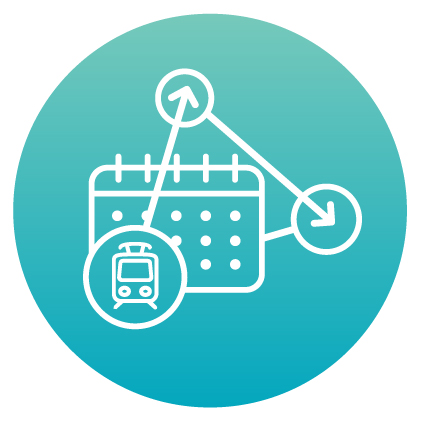The Seasonal Intelligence Platform: tackling the autumn adhesion challenge

Every Autumn in the UK, leaves fall on to the railway line, causing a thin film to build on the top of the rail, which gets more slippery with each passing train. Special treatment trains are used to clean the track and prevent the build-up of fallen leaves.
Poor adhesion between the wheel and rail costs industry and wider society over £350 million every autumn. This includes the performance impact (around £290 million) and prevention, management and cleaning (around £64 million). Low adhesion also causes a potential safety risk through longer braking distances, and passenger services can be slower due to the impact on traction and drivers having to navigate more carefully.
A project involving Porterbrook, Network Rail and a company called Route Reports developed a complete solution for monitoring network adhesion and seasonal treatment strategies. The Seasonal Intelligence Platform (SIP) is currently driven by data from Porterbrook’s Electrostar fleet, operated by Southern. These passenger trains make thousands of journeys daily, generating and recording billions of event-based data points.
The SIP takes raw passenger train data and turns it into valuable insights, allowing rail treatment controllers to know exactly where, when and why an adhesion event has occurred. With over 100 trains currently sending data to the SIP, decisions can be made with the entire network in mind. The SIP can also identify issues with specific trains, allowing fixes to be actioned to ensure better service quality.
Network Rail has a large number of treatment trains which are active in autumn and winter, including Multi-Purpose Vehicles (MPVs), Railhead Treatment Trains (RHTTs) and Snow and Ice Treatment Trains (SITTs). Route Reports installed devices on the treatment vehicles to gather information on where the trains are and have been, which track sections were treated (including both water jetting and de-icing), and the speed of travel during the treatment. The data is passed from the devices every second, allowing for real-time tracking of the fleet positions and the treatment status of all track sections. This provides treatment controllers and managers with the information needed to manage the network.
The SIP includes the capability to compare the effectiveness of different types of treatment (e.g. treatment delivered at different speeds) to drive improvements. The average decrease in the occurrence of Wheel Slip Protection (WSP) activations after a treatment can be calculated, as well as the length of time for which a treatment remains effective – providing data for altering the frequency of treatments. This can be repeated for various track sections to identify differences in the response to treatment, which can allow for the reprovisioning of resources to areas that need it more.
October 2021
Back



